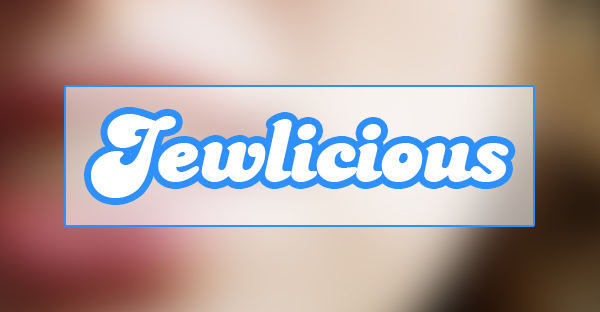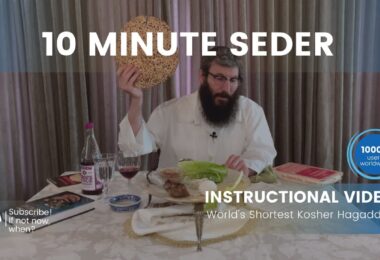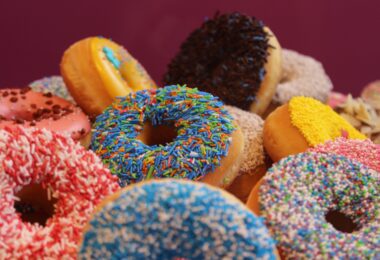I had the immense privilege and pleasure of spending the past few days in Connecticut at the Isabella Freedman Jewish Retreat Center for the Hazon Food Conference. I can’t yet write much about the weekend, because being at Isabella Freedman and at the Conference was so wonderful, I’m still processing it all. Suffice it to say that no one I spoke with wanted to leave.
For now, I just want to summarize a debate that we had over the weekend. I’ve heard this debate a few times, always difference, always gripping. Below are some of the arguments I heard, and now I’m putting it to you.
Latke or Hamentaschen: Which is better?
Arguments that were voiced in favor of the latke:
-If you look at a bicycle, most of the parts (e.g. wheels) are shaped like a latke.
-One of the most frequent problems on a bicycle is a chain that isn’t well enough greased. If you’re carrying a latke with you, you can use it for sustenance and/or to grease your chain.
-If you cut a hamentaschen in half and plant it, nothing happens. If you cut a potato in half and plant it, you will have several potatoes the next year.
-The latke is much more pure because it’s just a few ingredients; you don’t really know what the hamentaschen is (and it might contain prunes).
-We’re in the middle of the latke’s holiday, so obviously the latke gets bonus points.
-Hanukkah lasts eight days, while Purim is only one.
-Latke’s easier to spell.
Arguments in favor of the hamentaschen:
-You can fill it with whatever is your favorite (including, perhaps, the latke).
-It resembles the pubic triangle.
-The frame of the bicycle is composed of two triangles.
-The hamentaschen is the Jewish people’s version of the Cliff Bar.
-The hamentaschen requires no extra packaging, while the latke obviously does unless you want grease everywhere.
-The latke causes global warming.
-Free association: “What do people think of when they hear the word latke: oil. What do people think of when they hear the words Dick Cheney: oil. Therefore, a vote for latke is a vote for Dick Cheney.” (And the latke resembles Dick Cheney.)
For more arguments for both sides, please buy yourself a copy of The Great Latke-Hamentash Debate.
P.S. Hazon, among other things, does the Israel Bike Rides, New York Jewish Environmental Bike Rides, D.C. Bike Rides, etc., which is why there were so many bicycle related arguments. I have never gone on one of Hazon’s bike rides, but I hear they’re incredible, and I plan on doing the Israel Bike Ride in May.






Latkes, hands down.
What a question.
sufgania!
LATKES
Laykes vs. sufganiyot, maybe that would be hard to decide. Especially if the sufganiyot are the Persian kind, drenched with honey-orange syrup and sprinkled with ground pistachios.
But latkes vs. hamantaschen?
C’mon. Not even a contest.
clearly Ephraim, you’ve never had Ma Brakha’s Moroccan style Oznei Haman. Latkes are oily and greasy and lack all finesse. Drench anything in fat and of course it will taste good! But Mom’s Oznei Haman! Mmmm – none of the crumbly ashkenazic pastry, nary a poppy seed to be soon. Just soft, chewy, yummy Hamantashen goodness.
No, I have never had Ma Brakha’s Moroccan style Oznei Haman. Sounds good. What’s the filling?
However, I must take issue with your denigration of the latke. Having been exposed to Moroccan-style cholent, I can state categorically that drenching everything in fat is certainly NOT the way to make it taste good.
I hasten to add here that I have had a really good cholent exactly one time. Most cholents are nothing to write home about. Sephardi, Ashkenazi, it doesn’t matter. I know there are good cholents out there. I have just never had one except for that one time (I think it was the beef marrow bones that did it).
I will say, however, that if I were forced to choose which style was least bad, I would eat Sephardi cholent (or is it hamin? Or adafina? I get mixed up) rather than Ashkenazi. I have heard good things about Hungarian cholent, though. Full of meat, peppers and paprika, like a good goulash.
Contrary to popular belief making a good latke takes skill. It is very simple, but that is precisely why it is so easy to blow it. People think that since it’s just nothing but potatoes, onions and eggs any idiot can do it. You cant just grate potatoes and throw them in the pan. You have to pay attention and have some respect.
For latke fans, I recommend a Swedish-style potato pancake called “Rarakor med Graslok”, nothing but coarsely grated potatoes, chopped chives, salt and pepper, fired in a combination of butter and oil. The secret is to fry them very thin at a heat high enough to brown them nicely but not burn them. Absolutely delicious. No sour cream or jam required. Straight up, no chaser.
Marrow bones? O_o
Speaking of the Latke HamanTaschen Debate book… I wanted to add my two cents and book sense on this great book..
Forget the bibles, zohar, and books of kabbalah; bypass Roth and Ozick; for this is the most important Jewish book. I waited over 25 years for its release. I first became an addict of the Great Latke-Hamantash debates in the 1970’s. The debate is the sort of event that makes you want to become a Hillel Program Director. In 1946, a debate was started each November at the University of Chicago as a way to foster a sense of community among Jewish students and faculty members, as the December holidays approached.
The debates were farces; they attracted the top Jewish professors and students, Nobel laureates, university presidents, and notable scholars. The came together to debate whether the potato pancake or the triangular Purim pastry was the worthier food.
They applied their fields of study to these symbolic Jewish foods.
Professor Marvin Mirsky observed that the roundness of the latke suggested Plato’s circle of perfection and its flatness emphasized Plato’s ultimate truth. Professor Lawrence Sherman reminded his audience that in Romeo and Juliet, “Juliet was a Capulatke, Romeo a Hamantashague” He also showed that the Merchant of Venice had hidden meanings, that Shakespeare was a kosher baker, and Juliet’s moon was actually “mohn.”
This book collects the best of the debates. It includes Martha Nussbaum’s paean to both foods-in the style of Hecuba’s Lament-to Nobel laureate Leon Lederman’s proclamation on the union of the celebrated dyad. The latke and the hamantash are here revealed as playing a critical role in everything from Chinese history to the Renaissance, the works of Jane Austen to constitutional law. One law professor stunned the audience by breaking the rules, and defending the knish. One professor showed that Jewish foods influenced the roots of rock and roll, including “Good challeh, miss molly” and “Borsht Gudonov”; while another two teachers focused on Darwin and the evolution of bagels, latkes, and hamantaschen. During one satirical symposium in 1961, the Historian Bernard Weisberger discussed the latke in the context of original frontier (frying pan) American history, freedom, and manifest destiny (the latke expands in the oil). The late Allan Bloom explored the foundation of the foods in manna, and expounded on the Jewish Canon, Hegel, Marx, and the latke as Freudan round male thesis, hamantasch as female triad antithesis.
Was `Love and Latkes’ the sequel to `Pride and Prejudice’? Eminent philosopher and humorist Ted Cohen, supplies a wry foreword and debate, and anthropologist Ruth Fredman Cernea provides a larger context with her overview of the Jewish holidays, recipes, and a glossary of Yiddish and Hebrew terms, making the book accessible even to the uninitiated.